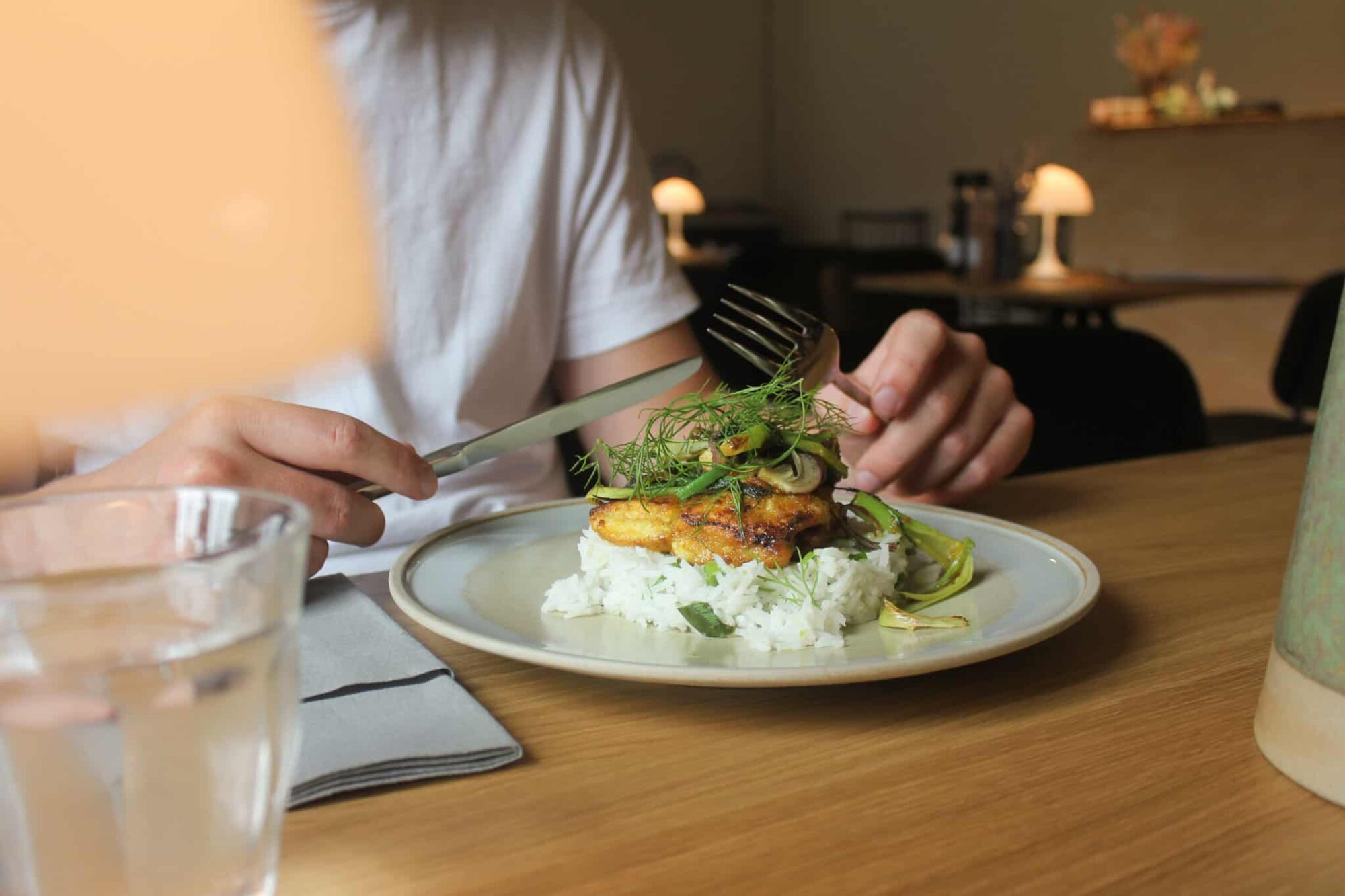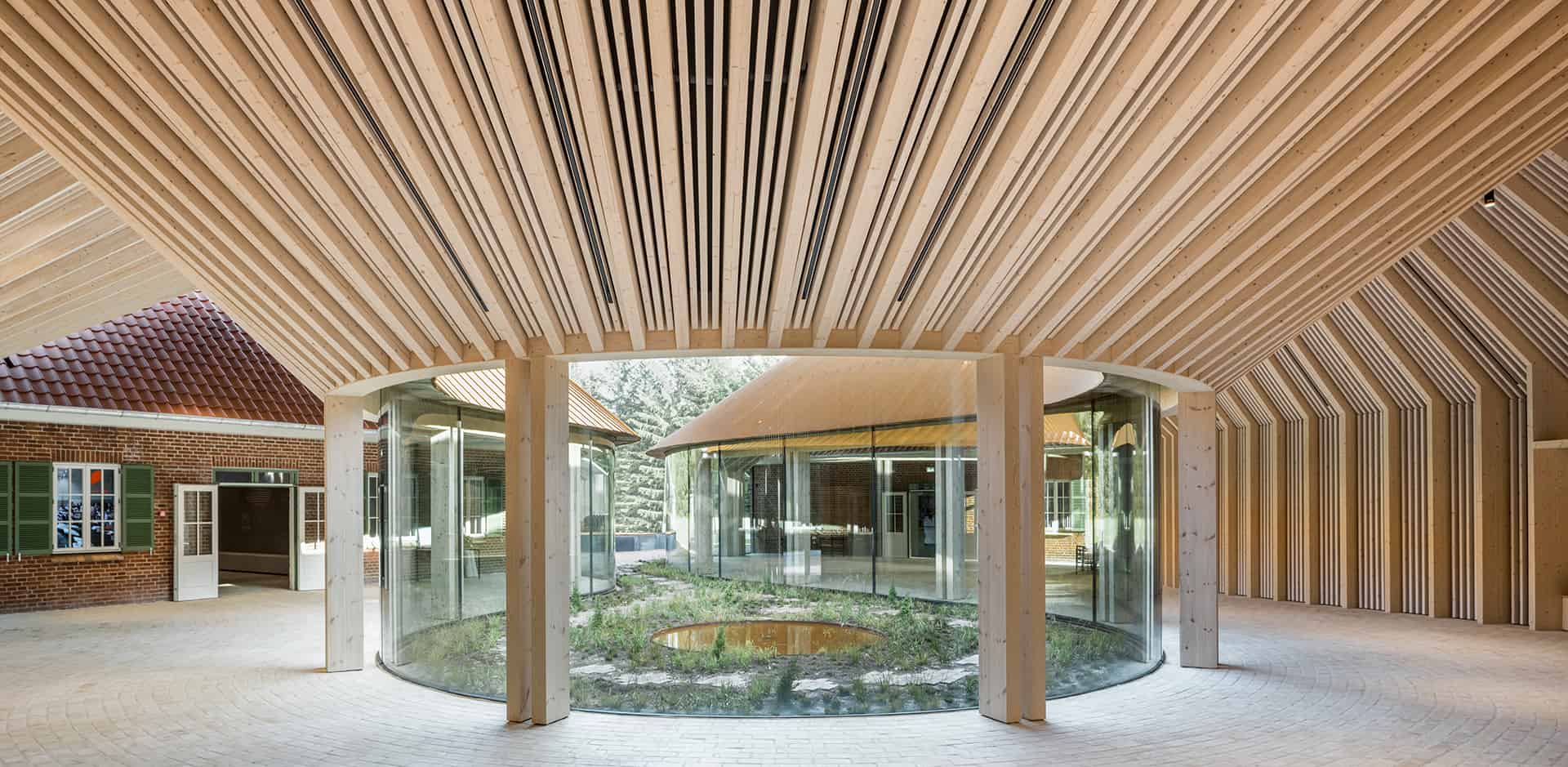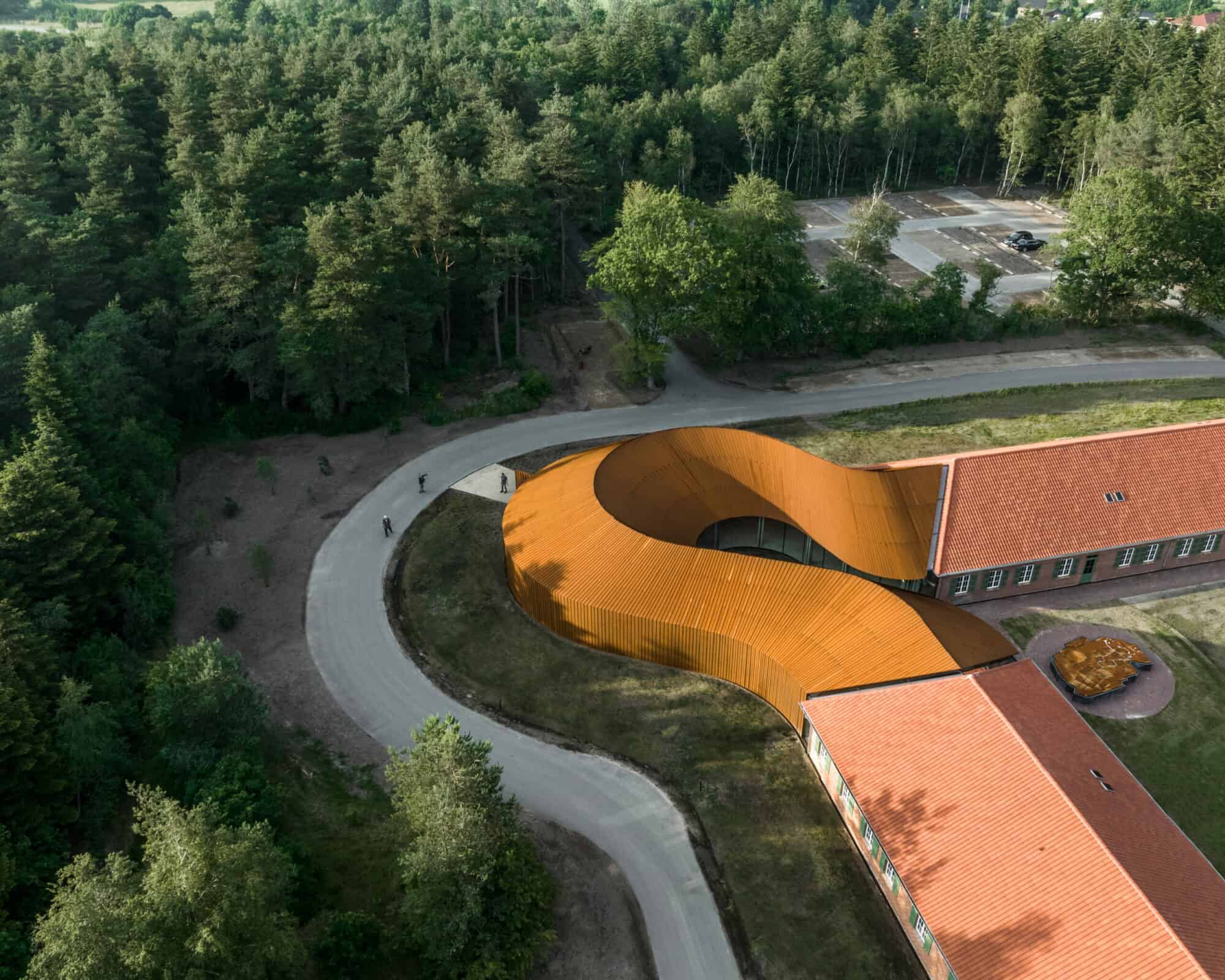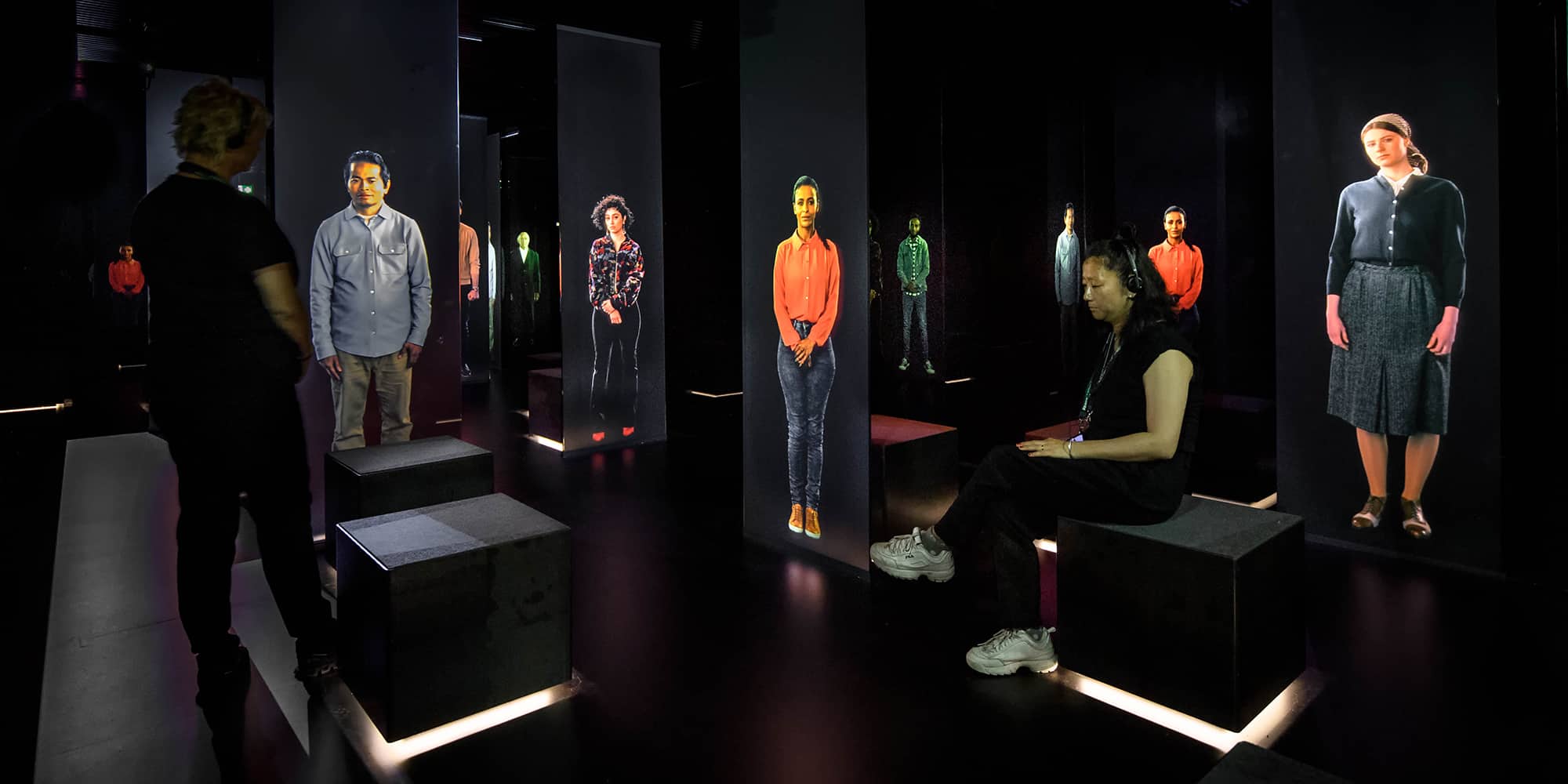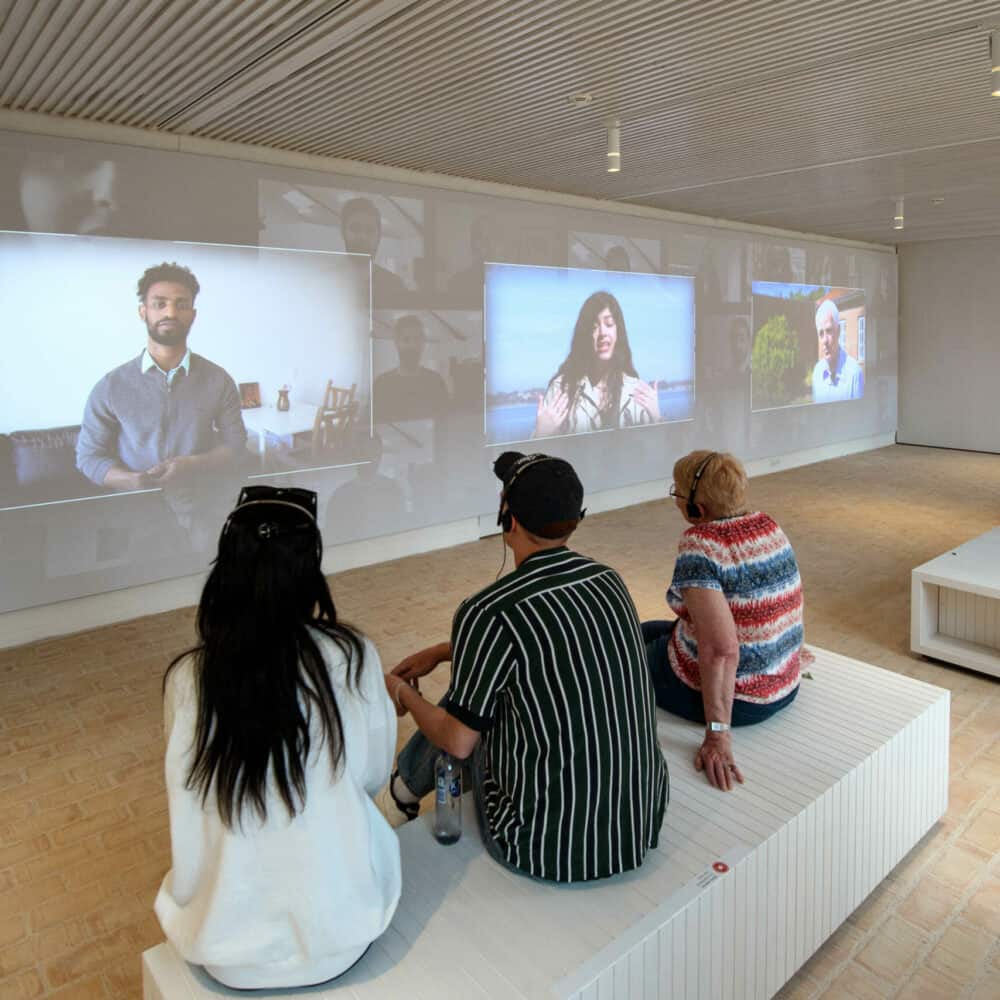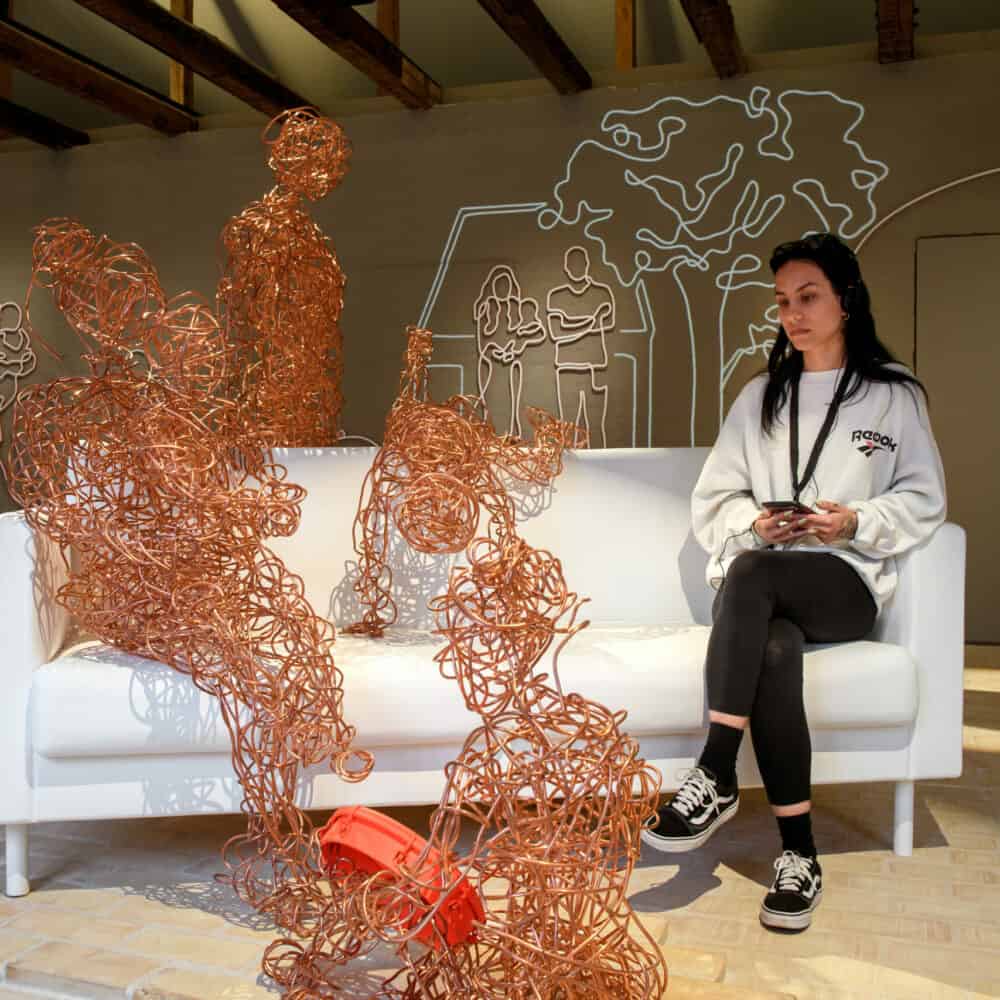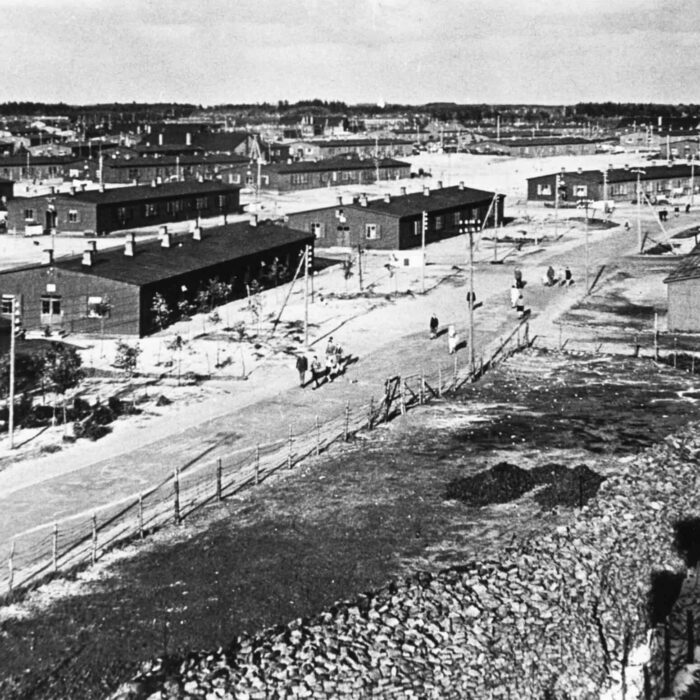Refugees at all times
Who are the actual people hidden away behind the headlines and statistics we encounter in the media? How does flight impact a person? What is ‘home’?
On the basis of stories of refugees from countries such as Germany, Hungary, Vietnam, Afghanistan and Syria, the exhibition turns statistics into people and conveys the universal experiences, thoughts and emotions associated with the plight of being a human being on the run.
Where statistics become people
Based on the UN’s definition of a refugee, we take you on a human journey across time and place. Interactive elements, films, sound and objects introduce you to people who were forced to leave behind everything they knew, and escape. You will follow their journey up until the moment they arrive in Denmark with their dream of a new future, a possible new home – but also a sense of insecurity and loss.
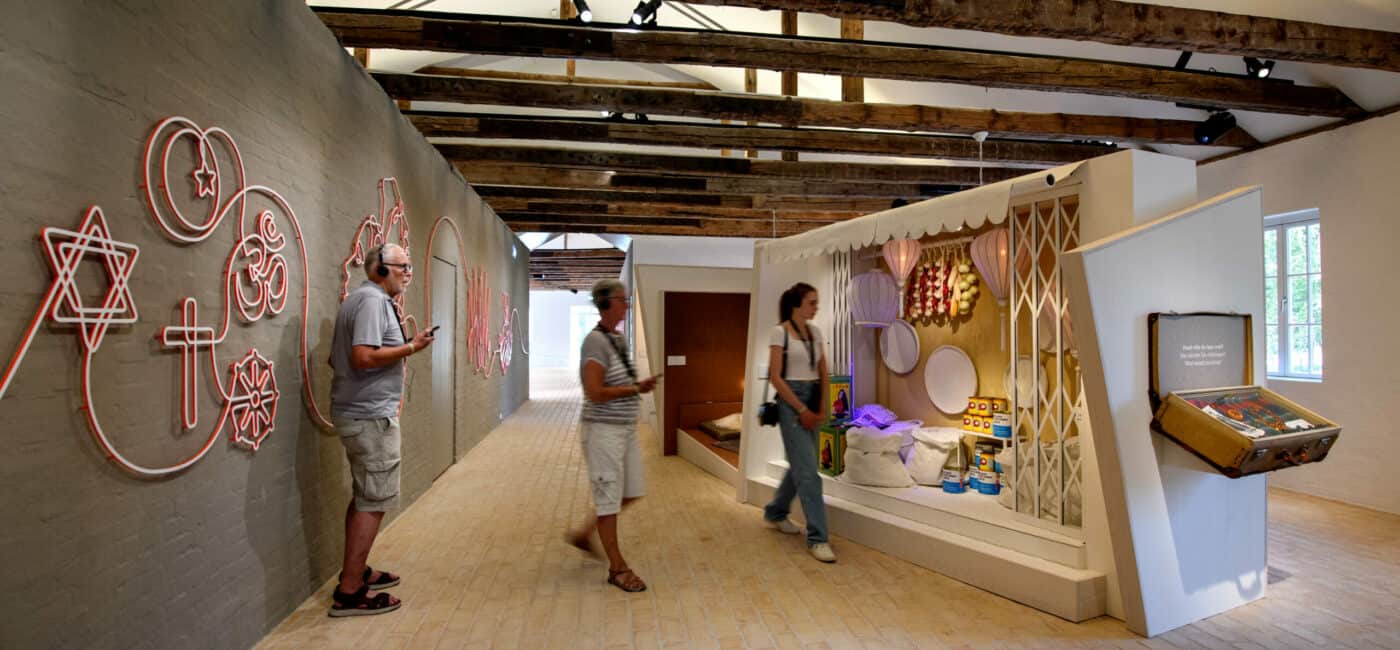
Tableau from the exhibition. Photo: Mike Bink
Currently, the world is witnessing the largest-ever flows of refugees. War and persecution force people to flee in the quest for survival, safety and perhaps a new home. The media are packed with powerful images, politicians argue this way and that, and the debate is all-pervading. That is why at FLUGT visitors will not only encounter refugees from the past. They will also meet the refugees who recently arrived in Denmark from places like Vietnam, Hungary, Afghanistan, Syria, and Ukraine.
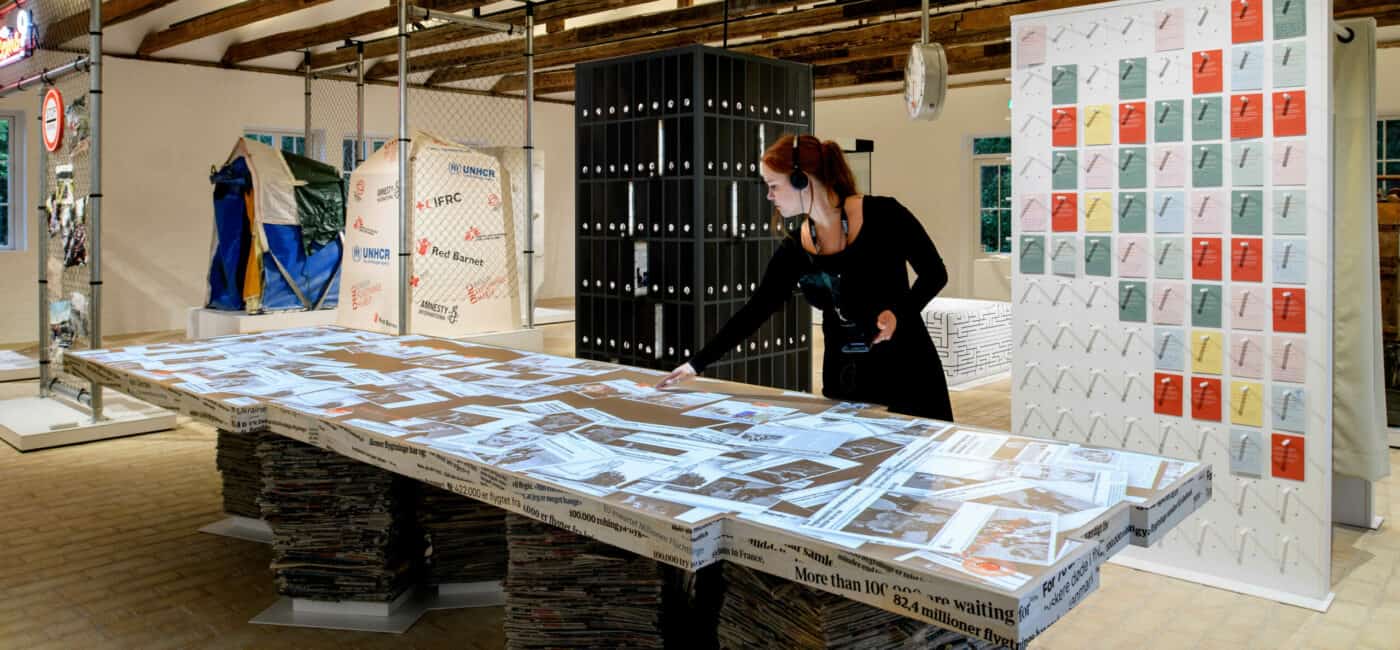
Installation in the exhibition. Photo: Mike Bink
In the exhibition large numbers and statistics become relevant by telling stories about individuals. People with family, friends, work, hobbies and – more than anything – dreams and hopes for their future.
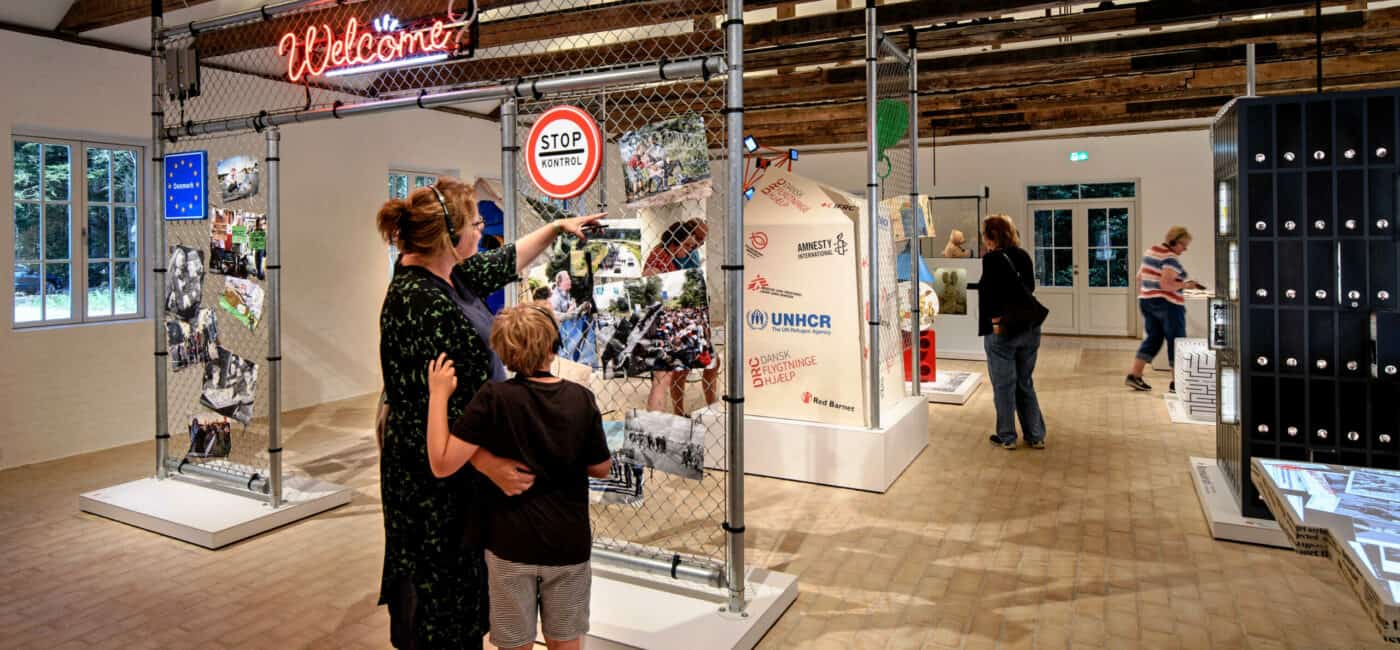
Installation in the exhibition. Photo: Mike Bink
As you pass through the various exhibition rooms and hear the individual stories, you are moved thematically from war and flight to possible safety and everyday life and (maybe) to a new home. The exhibitions also shed light on a host country’s attitudes to receiving large flows of refugees. All stories take place across time and place.
We have talked to a great many refugees about why they fled. About the thoughts they had and which considerations they made just before fleeing. Before they had to leave their homes. We have gathered these testimonies near the start of the exhibition, where we meet the refugees at home just before fleeing. Here, for example, is Vietnamese Noui who had to flee because he had been in the South Vietnamese army. Or Inge, who fled the advancing Russian forces in Germany in 1945. There are also Rahima, who had to leave her home and later her country on the run from the war in Syria in 2015, and Mirela, who fled the civil war in Yugoslavia in 1994. They are vastly different people with vastly different backgrounds and at vastly different times. But what they have in common is that external circumstances forced them to say goodbye to everything they knew and loved.
– Claus Kjeld Jensen, museum director

Director Claus Kjeld Jensen in the exhibition.
In the exhibition you will meet …
Gihan
… Who together with her husband and their three children fled across the Mediterranean in an overcrowded raft and came to Denmark in 2015. When they lived in Syria, her husband, Hanan, owned a large carpentry company and Gihan was a stay-at-home mom – In Denmark, their everyday life is very different. Here they both work. Gihan started as an intern in the local kindergarten for six months, where she really learned the language. Now she works in a supermarket in Oksbøl.
In the exhibition, Gihan talks about what it is like to have to start all over again in a completely new place and about taking an education, finding a job and giving her children a future.
Our home is here in Denmark. A month and a half after our arrival we got this house in Billum. There was this couch, a vacuum cleaner and food in the fridge. From day one, I felt at home. We felt safe. I hope the war in Syria stops so we can visit, but we will never move back. I never again want to experience the fear we felt on board that boat. Moreover, we would have to start all over again. We’ve done it before and it’s painful every time.
She says that her work in the local town has meant that she now knows most of the people in the town: “We do not call ourselves refugees, we know people in the town now.”

Gihan at work at the local supermarket.
Ruth,
… who as a child in early 1945, fled with her mother and sister from Königsberg (now Kaliningrad) to Copenhagen. It was a harrowing journey across the Baltic Sea with airstrikes, submarines, darkness and extreme cold. When they arrived in Copenhagen, they were hurried into a warehouse because the harbor was under attack. After some time, they were moved to Refugee Camp Oksbøl, where Ruth started school. She enjoyed the peace and the clear blue sky without bombers and air alarms. She and the other children played in the forest and in Oksbøl she felt like a bird that had finally been let out of its cage.
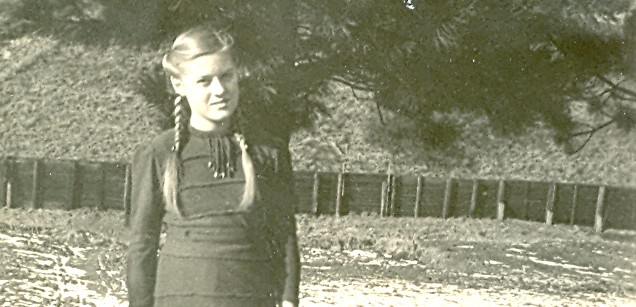
Ruth at the age of 14-årig after having returned to Germany.
Rahima,
… who was 10 years old when the war in Syria broke out.
I never thought there would be a war. It was just something I heard about in history class at school. For example, we heard about Palestine. I thought it was terrible for the countries it hit and I wanted to be a doctor myself so I could go out and help in war-torn countries.


